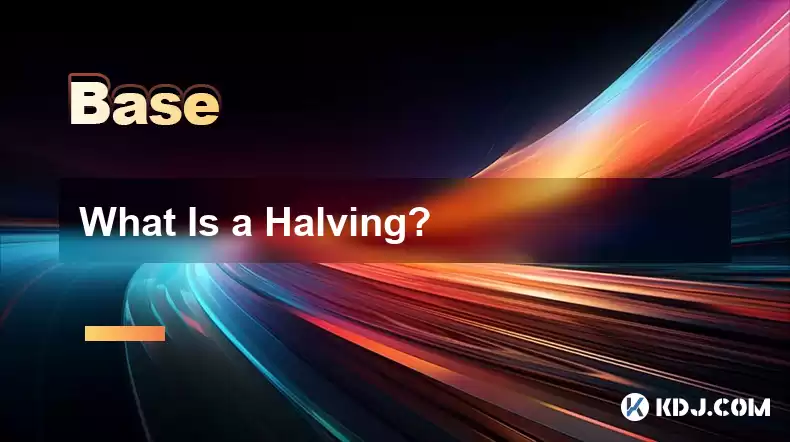-
 Bitcoin
Bitcoin $115000
0.12% -
 Ethereum
Ethereum $3701
4.50% -
 XRP
XRP $3.081
2.99% -
 Tether USDt
Tether USDt $0.0000
-0.01% -
 BNB
BNB $767.9
1.45% -
 Solana
Solana $169.5
3.13% -
 USDC
USDC $0.9999
0.01% -
 Dogecoin
Dogecoin $0.2106
4.30% -
 TRON
TRON $0.3334
1.62% -
 Cardano
Cardano $0.7564
2.54% -
 Stellar
Stellar $0.4165
0.76% -
 Hyperliquid
Hyperliquid $38.75
0.25% -
 Sui
Sui $3.593
3.00% -
 Chainlink
Chainlink $17.08
3.59% -
 Bitcoin Cash
Bitcoin Cash $573.6
4.35% -
 Hedera
Hedera $0.2508
-0.84% -
 Avalanche
Avalanche $23.07
6.46% -
 Ethena USDe
Ethena USDe $1.001
-0.02% -
 Litecoin
Litecoin $120.8
8.17% -
 UNUS SED LEO
UNUS SED LEO $8.943
-0.32% -
 Toncoin
Toncoin $3.400
-5.60% -
 Shiba Inu
Shiba Inu $0.00001255
1.54% -
 Uniswap
Uniswap $9.908
6.32% -
 Polkadot
Polkadot $3.718
2.10% -
 Monero
Monero $303.0
-0.74% -
 Dai
Dai $0.9999
-0.02% -
 Bitget Token
Bitget Token $4.392
0.91% -
 Cronos
Cronos $0.1403
6.31% -
 Pepe
Pepe $0.00001076
1.13% -
 Aave
Aave $267.2
1.80%
What Is a Halving?
Halving events in the crypto world, like those experienced by Bitcoin, have historically coincided with price surges due to the reduced supply of newly minted coins, creating scarcity and potentially driving up demand and value.
Dec 18, 2024 at 01:48 am

Key Points:
- Definition and Significance of Halving
- Historical Overview of Halvings
- Impact of Halvings on Bitcoin Price
- Technical Explanation of Halving Process
- Halving Countdown and Future Implications
- Comparison with Other Cryptocurrencies with Halving Mechanisms
- FAQs Related to Halving
What is a Halving?
In the realm of cryptocurrencies, a halving refers to a pre-defined event in which the block reward for miners is reduced by half. This structured halving mechanism plays a crucial role in the monetary policy of many blockchain networks, most notably Bitcoin.
Historical Overview of Halvings
Bitcoin has undergone three halvings to date, with the first occurring on November 28, 2012, followed by the second on July 9, 2016, and the third on May 11, 2020. The block reward started at 50 BTC and is currently at 6.25 BTC.
Impact of Halvings on Bitcoin Price
Historically, halving events have had a significant impact on Bitcoin's price. Due to the reduced supply of newly minted bitcoins, the halving creates scarcity, potentially driving up demand and price. Historically, Bitcoin's price has tended to surge in the run-up to and following halving events.
Technical Explanation of Halving Process
Technically, a halving is initiated by a hard fork in the blockchain's protocol, which changes the block reward value. Miners verify and process transactions on the network and are rewarded with a certain amount of cryptocurrency for their computational effort. With each halving, the reward they receive is reduced by half.
Halving Countdown and Future Implications
The next Bitcoin halving is projected to occur in May 2024, bringing the block reward down to 3.125 BTC. With each halving, the supply of newly minted bitcoins diminishes, making it a potentially significant event for the cryptocurrency's value.
Comparison with Other Cryptocurrencies with Halving Mechanisms
While Bitcoin is the most prominent cryptocurrency with a halving mechanism, other cryptocurrencies have adopted similar strategies. For instance, Litecoin and Dogecoin also implement halving, with specific schedules and block reward structures.
FAQs Related to Halving
1. What is the purpose of halving?
Halving aims to control the inflation rate of the cryptocurrency, gradually reducing the supply of new tokens to maintain scarcity and stabilize value.
2. How often does a halving occur?
For Bitcoin, halving events occur approximately every four years, as the block reward is reduced by half when a specific number of blocks are mined.
3. Will halvings continue indefinitely?
Typically, halving mechanisms are designed to continue until a maximum supply limit is reached, after which new tokens will cease to be minted.
Disclaimer:info@kdj.com
The information provided is not trading advice. kdj.com does not assume any responsibility for any investments made based on the information provided in this article. Cryptocurrencies are highly volatile and it is highly recommended that you invest with caution after thorough research!
If you believe that the content used on this website infringes your copyright, please contact us immediately (info@kdj.com) and we will delete it promptly.
- Bitcoin, Fed Rate Cut, and Crypto Stocks: A New Yorker's Take
- 2025-08-05 14:50:12
- Police, Cryptocurrency, Bitcoin Windfall: Unexpected Gains and Cautionary Tales
- 2025-08-05 15:30:12
- MAGACOIN: The Next Shiba Inu ROI? A Crypto Presale Deep Dive
- 2025-08-05 15:30:12
- Bitcoin, Kiyosaki, and the August Curse: Will History Repeat?
- 2025-08-05 14:50:12
- Crypto Airdrops: Your August 2025 Guide to Free Tokens & Opportunities
- 2025-08-05 13:45:13
- Luxury Dining Reimagined: St. Regis Singapore & Marriott's Culinary Celebration
- 2025-08-05 13:45:13
Related knowledge

What is the difference between CeFi and DeFi?
Jul 22,2025 at 12:28am
Understanding CeFi and DeFiIn the world of cryptocurrency, CeFi (Centralized Finance) and DeFi (Decentralized Finance) represent two distinct financia...

How to qualify for potential crypto airdrops?
Jul 23,2025 at 06:49am
Understanding What Crypto Airdrops AreCrypto airdrops refer to the distribution of free tokens or coins to a large number of wallet addresses, often u...

What is a crypto "airdrop farmer"?
Jul 24,2025 at 10:22pm
Understanding the Role of a Crypto 'Airdrop Farmer'A crypto 'airdrop farmer' refers to an individual who actively participates in cryptocurrency airdr...

What is the difference between a sidechain and a Layer 2?
Jul 20,2025 at 11:35pm
Understanding the Concept of SidechainsA sidechain is a separate blockchain that runs parallel to the main blockchain, typically the mainnet of a cryp...

What is the Inter-Blockchain Communication Protocol (IBC)?
Jul 19,2025 at 10:43am
Understanding the Inter-Blockchain Communication Protocol (IBC)The Inter-Blockchain Communication Protocol (IBC) is a cross-chain communication protoc...

How does sharding improve scalability?
Jul 20,2025 at 01:21am
Understanding Sharding in BlockchainSharding is a database partitioning technique that is increasingly being adopted in blockchain technology to enhan...

What is the difference between CeFi and DeFi?
Jul 22,2025 at 12:28am
Understanding CeFi and DeFiIn the world of cryptocurrency, CeFi (Centralized Finance) and DeFi (Decentralized Finance) represent two distinct financia...

How to qualify for potential crypto airdrops?
Jul 23,2025 at 06:49am
Understanding What Crypto Airdrops AreCrypto airdrops refer to the distribution of free tokens or coins to a large number of wallet addresses, often u...

What is a crypto "airdrop farmer"?
Jul 24,2025 at 10:22pm
Understanding the Role of a Crypto 'Airdrop Farmer'A crypto 'airdrop farmer' refers to an individual who actively participates in cryptocurrency airdr...

What is the difference between a sidechain and a Layer 2?
Jul 20,2025 at 11:35pm
Understanding the Concept of SidechainsA sidechain is a separate blockchain that runs parallel to the main blockchain, typically the mainnet of a cryp...

What is the Inter-Blockchain Communication Protocol (IBC)?
Jul 19,2025 at 10:43am
Understanding the Inter-Blockchain Communication Protocol (IBC)The Inter-Blockchain Communication Protocol (IBC) is a cross-chain communication protoc...

How does sharding improve scalability?
Jul 20,2025 at 01:21am
Understanding Sharding in BlockchainSharding is a database partitioning technique that is increasingly being adopted in blockchain technology to enhan...
See all articles

























































































